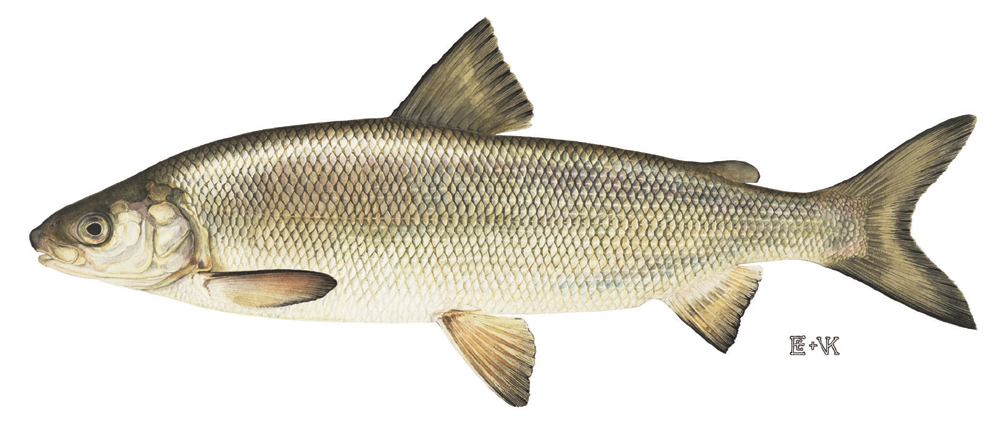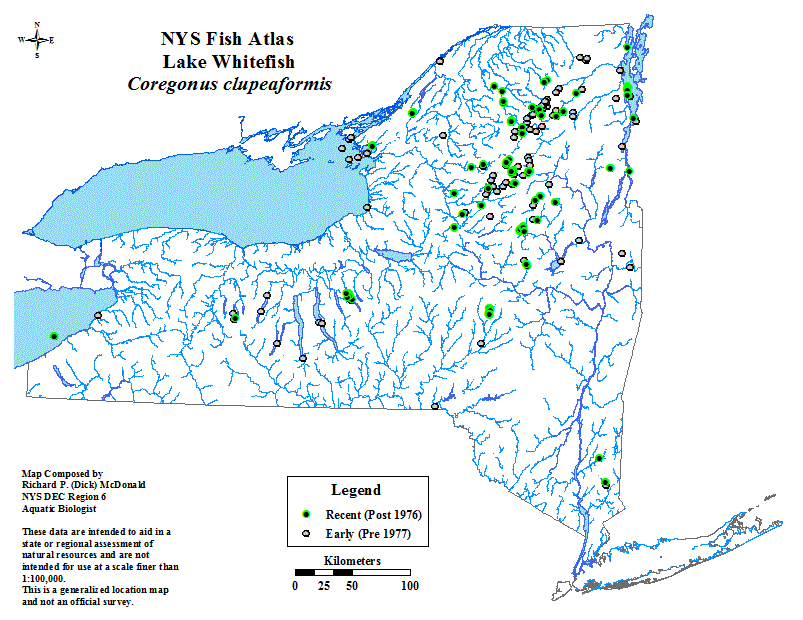
Lake Whitefish (Coregonus clupeaformis)
Lake whitefish are generally white with a light olive green shading along the back, which has a slight arch in front. Their fins are white, but the tail has a dark edge. The tail is deeply forked, and an adipose fin is present. The average length for these fish is 18 inches and weight is about 2-4 pounds.
The lake whitefish occurs in Lakes Erie and Ontario, tributaries of the St. Lawrence River, Otsego Lake, and some of the Finger Lakes. It is spotty but widespread in the Adirondacks, including Lake Champlain. It has been introduced in lakes elsewhere, but its present distribution in these lakes is questionable.
As its name implies and its distribution illustrates, this fish inhabits large, deep lakes, often the same water areas as lake trout. They spawn in late fall, migrating to shoal areas in lakes or moving up tributary streams. Nests are not built, but several thousand eggs are randomly deposited over the bottom. Parental care is not given to eggs or young. Eggs remain on the spawning ground until they hatch the following spring. Young lake whitefish generally move from the shallow, inshore areas to deeper water by early summer.
Lake whitefish feed primarily on small crustaceans and insects; they sometimes eat small fish.
Lake whitefish are delicious, important commercially in the Great Lakes, and sought by sport fishermen, especially during fall and winter. Besides having palatable flesh, the liver and eggs (sometimes sold as caviar) are also fine eating.
Distribution of lake whitefish in NY state.
An image of the lake whitefish is also available for download.
